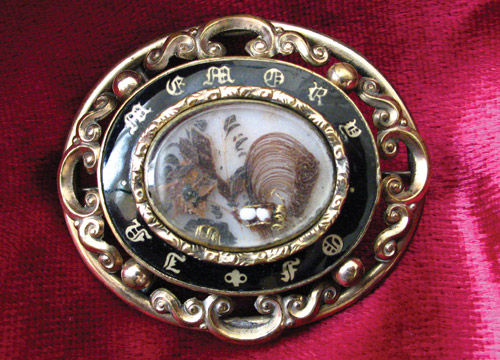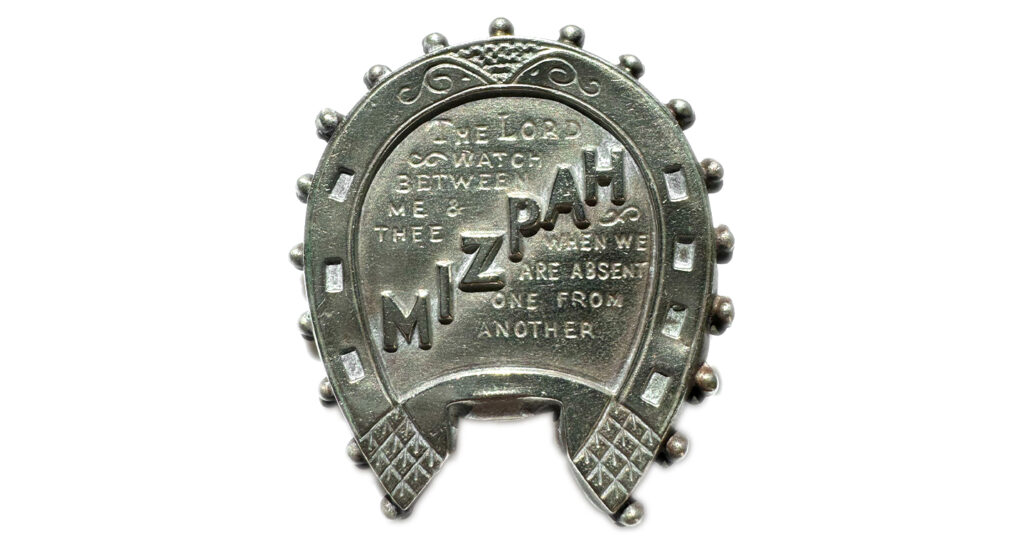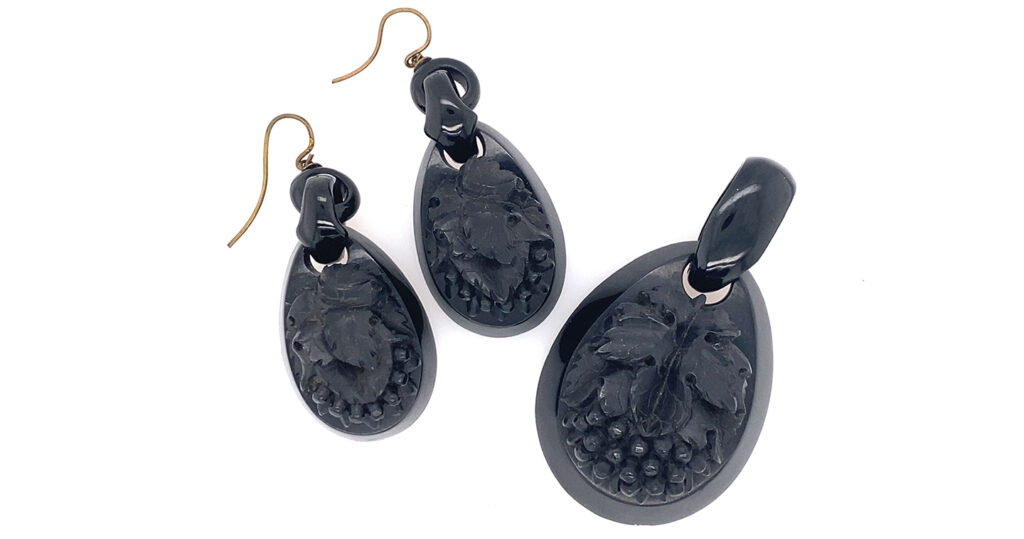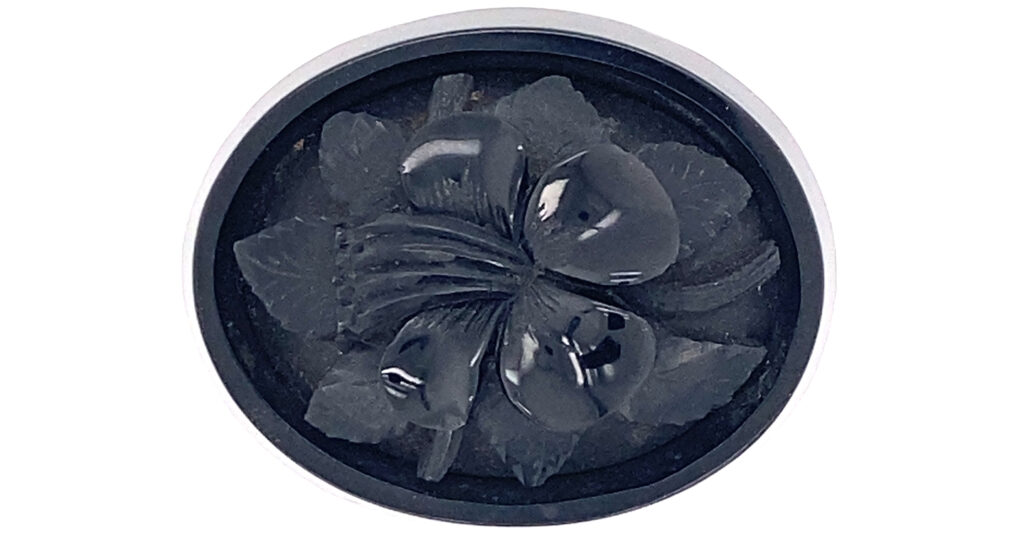Gothic Revival and Its Influence in a Brooch
By the 1830s, styles became grander, with machine working on gold lockets. Lower grade alloys and pinchbeck became more of a common material in jewellery (which made it cheaper and more accessible) post the Hallmarking Act of 1854.
This brooch from around the time of 1840 shows the fine hairwork housed inside, as it is entwined with gold and pearls. The other obvious feature found commonly from this time on (though is was also widely used previously) is its bold black enamel work and the inscription of ‘In Memory Of’.
Notice the use of the font in this piece and the Gothic typography. It is a jewel very fashionable for its time, a time when the Gothic Revival period had harkened a change back to traditional ways. For more on this, please view the articles at:
Gothic Revival in Culture and Jewellery: Part 1, c.1740-c.1850
Gothic Revival in Culture and Jewellery: Part 2, c.1850-c.1900
Gothic Revival in Culture and Jewellery: Part 3, Breaking Perceptions
The cut and feathered hairwork, with its floral embellishments that actually accentuate the border to the piece (also with floral decorations) and the gold wire with pearls are a reflection on the previous Neoclassical styles that had maintained in the popular lexicon, but skewed to the more humanist view of the self, using the hairwork of the loved one to depict the scene.







